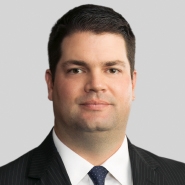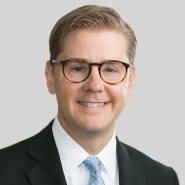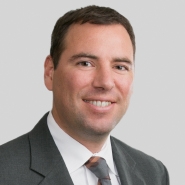Hold the Frye: Florida re-adopts the Daubert standard
Special thanks to Nathaniel Sutton, University of Virginia School of Law Class of 2021, for his contributions to this alert.
On May 23, 2019, the Supreme Court of Florida adopted the Daubert standard for the admissibility of expert testimony. The per curiam decision, In re Amendments to the Florida Evidence Code, takes effect immediately and has the potential to reshape product liability litigation only months after the Court, in DeLisle v. Crane Co., seemingly rejected the Florida Legislature’s attempt to foist Daubert on Florida courts.
Florida adheres to Frye
Florida’s shift marks the latest change in state evidence law following the seminal 1993 Daubert decision. Before Daubert, state and federal courts alike weighed the admissibility of expert testimony under Frye’s general acceptance test. Judges would reject an expert’s opinion under this precedent only if the scientific technique was new or novel and the technique had not received general acceptance in the scientific community. This approach gave judges little room to tread on the jury’s role in making credibility determinations. If the technique was not novel, the judge was not involved. Roughly 12 states still follow Frye, including California.
Under Daubert v. Merrell Dow Pharmaceuticals, Inc., the Supreme Court granted judges a more vigorous gatekeeper role. Regardless of whether a technique is novel, judges are tasked with assessing the reliability of the expert’s methods, the sufficiency of the data and the application of the methods to the facts of the case. In other words, the judge’s “technical savvy” rather than general acceptance in the scientific community seemingly controlled the path to the jury.
For decades, Florida’s Supreme Court followed Frye v. United States. In its October 2018 DeLisle decision, the Court rejected a legislative amendment adopting Daubert and reaffirmed the general acceptance test. Concerns about complex hearings, increased costs and the usurpation of the jury’s role animated the Court’s decision. Justice Pariente, concurring, predicted that lengthy Daubert hearings would raise expenses and limit plaintiffs’ access to justice. Additionally, the Court preferred to leave credibility determinations to the jury. Florida seemed to have settled on Frye . . . at least for a few months.
The Supreme Court reverses course
Seven months later, by virtue of the instant case, Florida became the latest state to lockstep with Rule 702 of the Federal Rules of Evidence. Defending this change, the majority emphasized the benefits of consistency in eliminating forum shopping and promoting fairness in Florida’s courts.
The justices’ concerns from DeLisle were conspicuously absent (more on that below). The majority noted that Daubert hearings have proved workable in 36 other states and that Daubert “did not enact a sea change in federal evidence law.” Furthermore, Daubert helps remedy deficiencies inherent in Frye—namely its narrow application to novel scientific techniques.
For now, the Court refused to definitively opine on whether Daubert hearings may create constitutional concerns. But plaintiffs raising their right to a jury trial or access to justice may not embrace the changes. Citing a former opinion from Justice Polston, the Court noted that these perceived shortfalls “appear unfounded.” For one, federal precedent suggests that Daubert does not infringe upon constitutional rights. And for another, the crescendo of state support for Daubert bolsters this interpretation.
Writing in dissent, Justice LaBarga echoed Justice Pariente’s concurrence from DeLisle. Preferring to follow Frye, he worried that Daubert hearings could preclude “pure” opinion expert testimony based solely on the expert’s experience and education. Because this type of testimony often does not turn on a “novel technique,” it was insulated from review under Frye. In Justice LaBarga’s opinion, this “usurp[ation] of the jury’s role” would threaten constitutional rights. Furthermore, the burden of the rule change would fall heavily on poorer litigants who cannot afford the expenses associated with complex hearings. Finally, citing comments from members of the Florida Bar, Justice LaBarga worried that Daubert hearings will overburden the state court system. Delays and increased costs will be the result, he claimed.
A procedural disagreement
While the majority preferred Daubert to Frye, other grounds for disagreement arose, resulting in additional opinions. Writing in dissent, Justice Luck contended that the Court misapplied its amendment procedure in two ways. First, he contended the Court lacked the present authority to adopt the amendment under its rulemaking power. Second, he disputed DeLisle’s holding that the amendment was procedural and believed the Court should have waited for a change to overrule that opinion. Justice Lawson responded to both contentions in his concurrence.
Justice Luck’s former assertion critiqued the majority for passing an amendment sua sponte—without receiving a report from the code and rules of evidence committee. Lacking this report, comments to the amendment, and a recommendation from the board of governors, the majority ignored the Court’s mandatory procedures, Justice Luck wrote. Internal operating procedures cannot excuse compliance, according to Justice Luck. Justice Lawson countered that the Court has allowed deviation in the past. In fact, the rule requires that procedures only be followed “generally.” Justice Lawson interpreted the Court’s rulemaking powers broadly and emphasized its ability to amend the rules at the request of any justice and also believed that the input received for the amendment in 2017 sufficed to comply with the rule in 2019.
Justice Luck also contended that the Daubert amendment was substantive. As a result, the Court could not adopt it as a procedural rule under its rulemaking authority. Supporting this argument, he cited parallels for evidence introduction in the death penalty and hearsay contexts. Justice Lawson disagreed. He reasoned that it was “routine” practice for the Court to adopt amendments “to the extent they are procedural” without deciding that ultimate issue. Because the Legislature similarly adopted the provision, the Court avoided any separation of powers problems, according to Justice Lawson.
Takeaways
There are at least two key takeaways from this case.
First, since DeLisle, three seats on the Supreme Court bench changed hands due to Florida’s mandatory judicial retirement age. Despite Frye’s historical pedigree in Florida and DeLisle’s recent adherence to Frye, the new justices demonstrated a willingness to assert their authority on the bench. According to Justice Luck, the other two new justices even ignored mandatory procedures in making this decision. Florida’s practitioners should be aware of this shift and, for better or for worse, prepare for a Court willing to question its precedent.
Second, a central element of DeLisle and this case is a disagreement about Daubert’s scope. Everyone agrees that Frye’s application to novel techniques is narrow. But can Daubert be narrow too? The majority in DeLisle and Justice LaBarga’s dissent here say no. They believe Daubert will empower judges to seize credibility evaluations of experts from the jury, creating concerns of a constitutional dimension. But the “new” majority doubts this will come about. In fact, looking at federal law and the 36 Daubert states, the majority contends that little change will occur. Instead, the judge’s evidentiary role will correct inconsistencies between federal and state procedure, and also lead to a fairer judicial process. Monitoring this disagreement will be interesting—even as the Frye/Daubert pendulum swings overwhelmingly toward Daubert in the 50 states.
For more information please contact Jason Gerken, Tracey Turnbull, Joyce Edelman, Tony McClure, Javier Pacheco or any member of Weil Brown’s Product Liability Practice Group.







